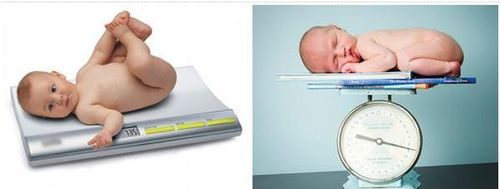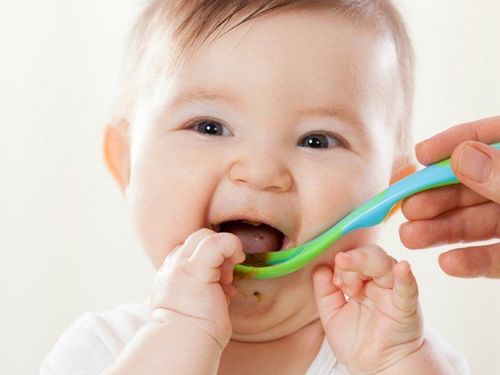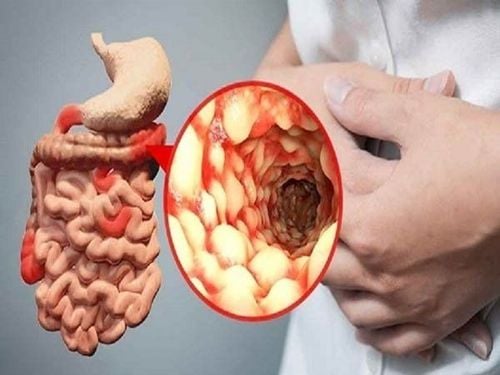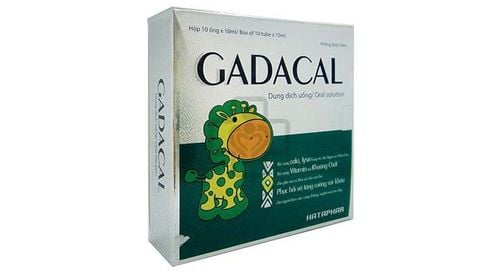This is an automatically translated article.
The article is professionally consulted by Master, Doctor Phan Thi Cam Van - Neonatologist - Department of Pediatrics - Neonatology - Vinmec Danang International General Hospital.Children over 6 months old breast milk no longer meets the needs of the baby's growth. At this time, your baby will begin to get used to the first spoons of solid food. To accompany the baby during this period, the mother needs to prepare the basic knowledge about weaning so that the baby is always interested in the meals and must also be full of nutrients to be able to take the best care of the baby. from the very beginning of life.
1. Time to decide to introduce solid foods to babies
According to the recommendations of the World Health Organization (WHO), babies will be introduced to solid foods when they are 6 months old, because at this time their digestive system has developed quite completely, so they can absorb foods. Because breast milk is denser and more complex than breast milk, babies really need complementary foods for healthy development because breast milk supply after 6 months is not enough to meet the baby's daily nutritional needs anymore.
From the above recommendation, nutrition experts encourage parents to start the period of introducing solid foods when the child is 6 months old and ends at 24 months. Energy from breast milk is only enough to provide about 450 kcal/day, while children need about 700kcal/day and energy needs will increase with age. Therefore, complementary foods are needed to fill the gap in energy gaps that breast milk does not provide. But mothers should remember that after 24 months, it is advisable to end the period of weaning for the baby because if it lasts, it will cause many problems for the child such as not knowing how to chew or difficult to integrate in school because of eating a different diet.
Therefore, it is best for the mother to give the baby solid foods after 6 months of age, if the weaning is not done properly, it can cause the child to become anorexic and malnourished.
Trắc nghiệm: Sự phát triển tinh thần, vận động của bé thế nào là đúng chuẩn?
Khi nào bé biết nói, biết hóng chuyện hay biết cầm cốc là "đúng chuẩn"? Điểm xem bạn biết được bao nhiêu mốc phát triển tinh thần, vận động "đúng chuẩn" của bé nhé!The following content is prepared under supervision of Thạc sĩ, Bác sĩ y khoa, Ma Văn Thấm , Nhi , Phòng khám Đa khoa Quốc tế Vinmec Dương Đông(Phú Quốc)
2. Signs to recognize the baby is ready for solid food
The age of 6 months is an important milestone, helping children gradually get used to "new foods". However, to determine if the baby is really ready for solid foods, parents need to rely on the following signs of the child:The baby's weight has doubled compared to the birth weight. The baby has learned to keep his head straight and can sit on his own so that the mother can feed easily. Children learn to bring their lower lip forward to receive food from the spoon/spoon when feeding. Children have learned to turn their heads away when they don't want to eat certain foods, which helps parents choose the right food for each child's taste. The baby's tongue no longer automatically reflexes to push foreign objects (when they were young, anything they put in their mouths would push them out, except the nipple). Children show interest in the food their parents give them.

3. Basic rules when giving solid foods to babies
According to experience drawn from the American Pediatric Association's children's health care, weaning should pay attention to the following principles:
Let children learn to eat solid foods similar to breast milk. or similar to formula milk to help children get used to "new foods", help children gradually adapt to weaning and eating will become easier. Eat from dilute to solid: This principle should be kept in mind so that the baby's weaning process is always smooth, this is a principle to help children not react when exposed to strange foods and their digestive system can start to slow down. keep up with the digestion of more complex foods. Eat less to more: This is an important rule to avoid overworked baby's immature digestive system. Initially, the mother can practice feeding her baby powder with 1-2 tablespoons of powder, then gradually increase to 1⁄3 and then half a bowl of powdered rice each meal, feeding the child 2-3 meals a day. Even if the baby eats very well and quickly "settles" all the powder that the mother has prepared in the first few days, the mother should not let the child eat more because if he eats too much, the child is very susceptible to digestive disorders. . Eat from sweet to salty: Let your baby start the weaning period with sweet foods first, for example MSG with milk flavor, children will be more receptive to new foods when they have familiar milk flavors. After about 2-4 weeks, children can eat more salty powder made from meat, fish, ... with more nutritious ingredients. The principle of "coloring the bowl of flour": That is, the baby's weaning powder also ensures enough 4 important food groups to help children develop well. Flour group includes rice, flour, bread, vermicelli, pho, corn, potatoes... Protein group includes meat, fish, eggs, milk, shrimp, soybeans, soy products and legumes , other beans... The fat group includes oil, lard, butter, cheese and oilseeds. The group of vitamins and minerals includes fresh vegetables and fruits.

Do not add fish sauce/salt to baby's weaning food: Many mothers think that adding a little fish sauce and salt to their children's food will make the food richer and stimulate their child's taste. But it's actually the wrong thing to do. Nutritionists recommend that mothers should not add salt to their child's food because the child's kidneys are still weak. When adding fish sauce and salt to your child's food, the child's kidneys will have to work too hard, causing a lot of harm to the child's health later on. Mothers should also add a little cooking oil when cooking baby food. Fat / cooking oil is extremely important for your baby. In fact, easily digestible cooking oil is rich in energy and also has the ability to dissolve other substances, making it easier for the digestive system to absorb. Not only that, cooking fat/oil is also an important factor to help the child's body absorb calcium and vitamin D.
The principle of "don't force the child to eat" : When the child does not want to eat anymore or shows objection to weaning, Parents should give their children a break from solid foods for a period of 5-7 days and then continue to practice so that the child is not stressed about eating solids. For children to be healthy and develop well, it is necessary to have a nutritious diet in terms of quantity and quality balance. If children are not provided with adequate and balanced nutrients, it will lead to diseases of excess or lack of nutrients, which adversely affect the comprehensive development of children in terms of physical, mental and motor skills.
The period of baby eating solid foods is an extremely important period to help children develop comprehensively. Children who do not eat properly are at risk of micro-mineral deficiencies, causing anorexia, growth retardation, malabsorption, etc. If they notice the above signs, parents should supplement their children with supportive products. The supplement contains lysine, essential micro-minerals and vitamins such as zinc, chromium, selenium, and B vitamins to help fully meet the nutritional needs of children. At the same time, these essential vitamins also support digestion, enhance nutrient absorption, help improve anorexia, and help children eat well.
Parents can learn more:
Signs of zinc deficiency in children
Micronutrient deficiency and failure to gain weight in children
Please regularly visit Vinmec.com website and update useful information to take care of your child. Take care of the baby and the whole family.














